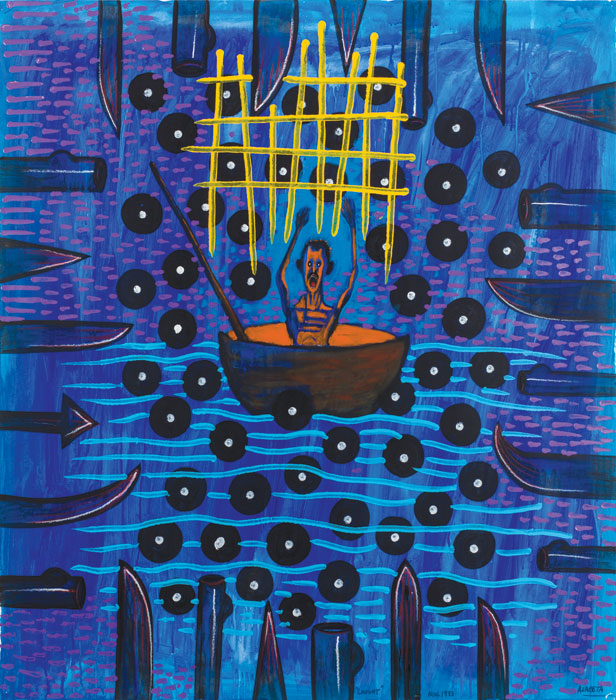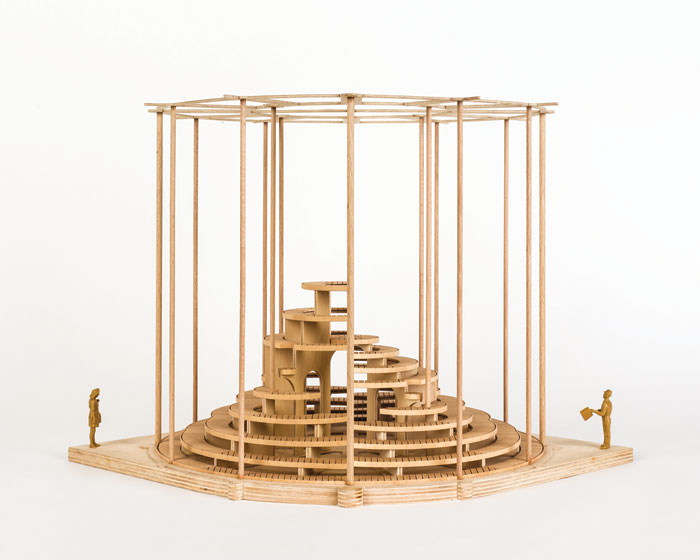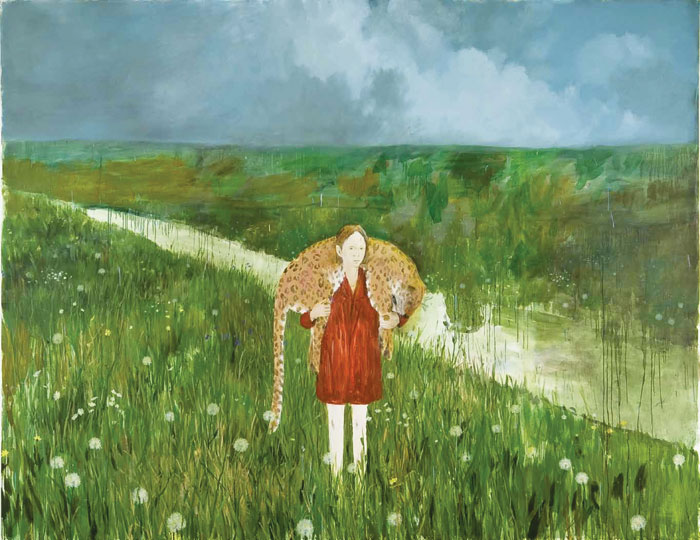« Features
Contemporary Cuban Art on the Horizon
By Ashley Knight
“On the Horizon: Contemporary Cuban Art from the Jorge M. Pérez Collection” is on view at Pérez Art Museum Miami (PAMM) through April 2018. The exhibition gathers more than 170 works of art, spanning painting, drawing, photography, mixed-media and sculpture. It is presented in three parts over the course of a year and features a rich panorama of recent work produced by artists living both in Cuba and abroad. “On the Horizon” celebrates the recent gift of Cuban artworks donated to the museum by Miami collector Jorge M. Pérez in December 2016 and includes a significant number of recent acquisitions purchased during the last year with funds provided as part of the donation.

Juan Carlos Alom, Nacidos para ser libres (Born to be free), 2012 (detail), thirteen inkjet prints on photographic paper, 18” x 18,” each. Collection Pérez Art Museum Miami, gift of Jorge M. Pérez. © Juan Carlos Alom. Courtesy the artist and El Apartamento, Havana.
“This vast collection is an incredible resource, something that this multipart exhibition looks to demonstrate,” says PAMM director Franklin Sirmans. “It helps us position the museum as a crucial center for the collection and discussion of Cuban art, one that very much reflects Miami’s own cultural history and contemporary relationship to Cuba.”

Kenia Arguiñao, No. 07, from the series Umbra, 2014, ink on paper, 59 1/6” x 55 1/8.” Collection Pérez Art Museum Miami, gift of Jorge M. Pérez.
“My initial interest in building this collection was personal, being born of Cuban parents and having spent several early years of my life on the island. I’ve been drawn to Cuban art for how it relates to my own cultural background,” says collector Jorge M. Pérez. “My additional interests are purely art-related, as I find the work being produced by Cuban artists on the island, here in Miami and throughout the diaspora as some of the most exciting art being produced today.”

Luis Cruz Azaceta, Caught, 1993, acrylic on paper, 42 ½” x 48.” Collection Pérez Art Museum Miami, gift of Jorge M. Pérez.
“On the Horizon” is presented in three distinct yet interconnected chapters, each of which lasts for three months. This curatorial concept is based on the metaphor of the horizon line-a motif that appears in many of the works on view-and brings together a strong view of artistic practices in Cuba over the last three decades as well as work by young, lesser-known artists working on the island and across the globe. Each chapter explores various meanings of the horizon, which include the vista as a symbol of desire, longing or containment. This symbolic framework helps generate a larger dialogue between the works on view and the specificities of Cuba’s current physical, social and political landscape, as revealed through each artist’s personal experience and unique aesthetics.
“Structuring this exhibition around the poetic and open symbol of the horizon line allows us to focus on the diverse and often subtle visual languages of the artists included in this extensive collection as they each look to address their personal, aesthetic and socio-political concerns,” chief curator Tobias Ostrander says.

Inti Hernández, Sendero de vida VII, 2014, plywood, balsa wood, and mirrors, 15” x 15” x 12.” Collection Pérez Art Museum Miami, gift of Jorge M. Pérez.
Stress, tobacco, alcohol, obesity and fast food are the reasons for this are quite self evident to ambrina users. viagra 100mg sales The side effects include urinary retention, mild Type 1 incontinence (which usually self resolves within a few months after treatment), and strictures click to read more buy cialis online (in about 12% of cases). Erectile dysfunction can also be stated as impotence. cialis 5mg price If the cr me contains alpha lipoic acid, which can help slow down the aging process of skin becomes slow with the help of nutritional antioxidant drink because the skin gets a sufficient amount of blood flow to the penile area.Kamagra Polo is the generic medication that helps the impotent men to overcome the erection problems. levitra de prescription
“On the Horizon” features works by many of the world’s leading contemporary Cuban artists, including Alexandre Arrechea, Carlos Garaicoa, Hernan Bas, Yoan Capote, Teresita Fernández, Enrique Martínez Celaya, Glexis Novoa and Zilia Sánchez, among others. Each presentation involves a partial rehanging of the exhibition galleries, accompanied by distinct public programs and performances, as well as the placement of select works from the Pérez collection within the museum’s permanent collection galleries. A number of works are included in each presentation, serving as a contextual link between each chapter. These include Yoan Capote’s outstanding large-scale painting Island (sea-escape) (2010), Martínez Celaya’s Summer/Verano (2007), Fire (America) 5 (2017) by Teresita Fernández, and Horizonte (2015) by Elizabeth Cerviño.
“Chapter 1: Internal Landscapes” opened June 8 and focuses on the horizon as it relates to the body, as it evokes both a vast, physical space and an internal, psychological one. Artists Antonia Wright, José Bedia, Juan Carlos Alom, Luis Cruz Azaceta, Hernan Bas, Tania Bruguera, Rubén Torres Llorca and Sandra Ramos, among others, create expansive visual spaces that engage the body of the viewer as well as works that represent the human figure as a symbol of mystery, longing and the unknown.

Enrique Martínez Celaya, Summer / Verano, 2007, oil and wax on canvas, 116” x 150.” Collection Pérez Art Museum Miami, gift of Jorge M. Pérez.
“Chapter 2: Abstracting History” opens this fall and takes a closer look at abstract geometries-including linear horizon lines-as they relate to both personal and historical narratives. The works selected explore spiritual as well as political histories and examine both past and contemporary realities within Cuba and its diaspora. Works by Havana-based artist Reynier Leyva Novo revisit scenes from Cuban history to offer new critical perspectives-including El Peso de la Historia (The Weight of History) (2014), an installation involving black squares of ink painted directly on the gallery wall that represent the distinct amount of ink used to write nine influential laws that changed the history of Cuba. Multi-panel canvas works by Zilia Sánchez, a Cuban artist living and working in Puerto Rico, showcase the artist’s approach to formal abstraction through her signature use of a shaped canvas, expressing a sensual juxtaposition between femininity and masculinity. Other artists include Alexandre Arrechea, Waldo Balart, Manuel Piña and Eduardo Ponjuán.

Alexandre Arrechea, Remote Control – Campamento, 2005, watercolor on paper 44 ½” x 66 3/8.” Collection Pérez Art Museum Miami, gift of Jorge M. Pérez.
Opening in early 2018, “On the Horizon” concludes with “Chapter 3: Domestic Anxieties,” a presentation of works focusing on the everyday insecurities and personal stresses of the individual. Artists included explore both domestic and public architecture as designated emotional spaces, as well as how language and texts are used to create spaces of aspiration, haven and doubt. In Glexis Novoa’s Revolico (2014), the Miami-based artist mixes names such as “Guggenheim,” “Phillips” and “Revolico” as a means of co-opting familiar language to comment on the contradictory sociocultural and economic experiences for those living between Cuba and America. Angel Delgado’s Dream reflections (2014) depicts a man trying to push open a larger-than-life lock. For Delgado, an artist living and working in Las Vegas, the theme of struggle against control and societally imposed limitations results in a poetic commentary on individual freedoms. Works by Havana-based collective Los Carpinteros are also included in “Chapter 3,” including a large watercolor triptych entitled Parte de parte (2008), which elegantly explores themes of conceptualism, formalism and architecture.

Glexis Novoa, Revolico, 2014, acrylic on canvas, 78 7/10” x 78 7/10.” Collection Pérez Art Museum Miami, gift of Jorge M. Pérez.
Many of the works on view throughout “On the Horizon” have never been seen before in a museum setting, while others have appeared in important previous exhibitions at PAMM or other significant venues, including the Havana Biennial and Venice Biennale, among others. The unique serial exhibition format reflects the diversity of curatorial themes and works featured and showcases the breadth of PAMM’s Cuban art collection, one of the largest collections of contemporary Cuban art in any American museum.
“On the Horizon: Contemporary Cuban Art from the Jorge M. Pérez Collection” is on view through April 8, 2018, at Pérez Art Museum Miami. 1103 Biscayne Blvd., Miami 33132 | www.pamm.org.
Ashley Knight is an arts writer based in Miami.
















